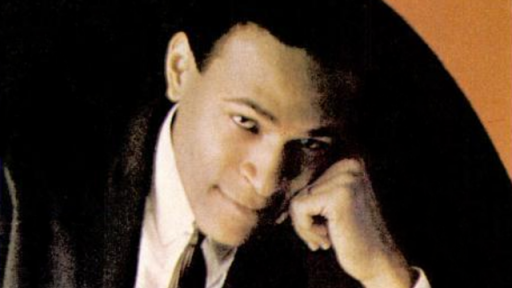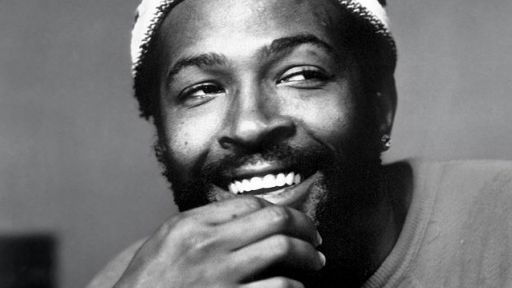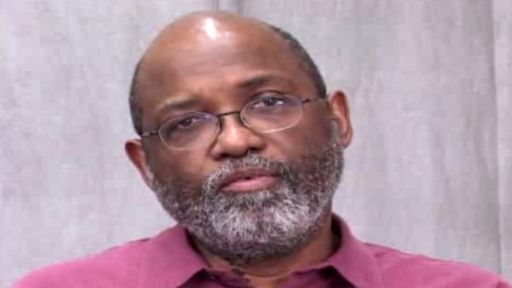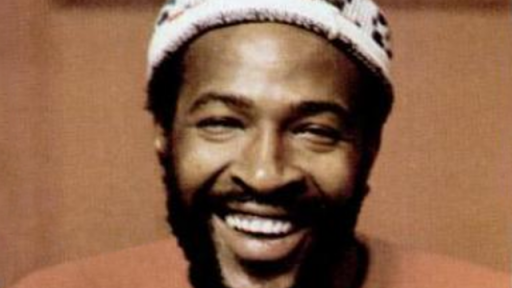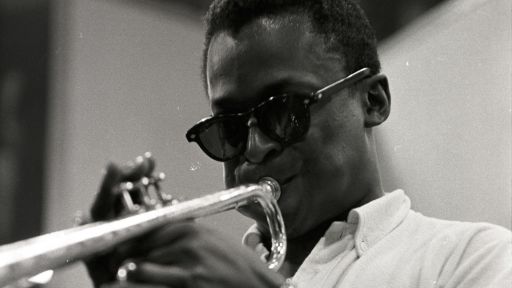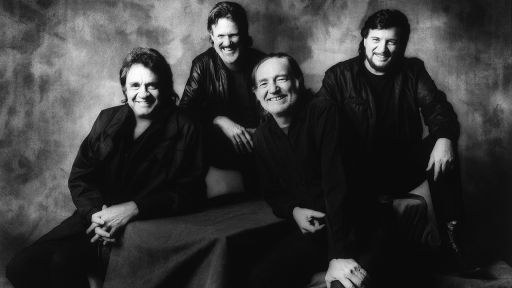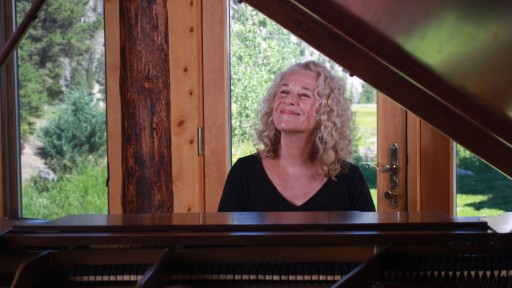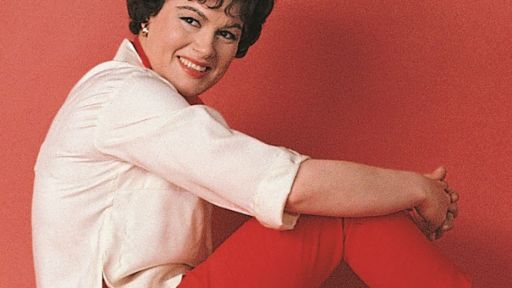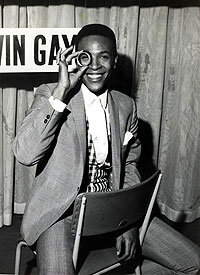
On April 2, Marvin Pentz Gay Jr. is born to Alberta & Marvin Pentz Gay in Washington D.C. at Freedman's Hospital. Marvin grows up with his parents, older sister Jeanne, younger brother Frankie, and younger sister Zeola in a segregated, poor, urban area of southwest D.C. The Gays maintained a strict religious household where many pleasures, such as television, movies, and dancing, were banned. Marvin's father, a minister, used both physical and psychological punishment to discipline his children -- especially Marvin, who provoked his father in order to get whatever attention he could. Marvin's mother supported the family through teaching and domestic work. (Photo by Popperfoto/Getty Images)

Marvin accompanies his father to church services and begins singing, performing, and playing instruments as early as three years old. (Photo Courtesy Universal Music/Motown Archives)

Marvin becomes a member of the D.C. Tones doo-wop group. (Photo Courtesy Universal Music/Motown Archives)

In October, Marvin drops out of high school and enlists in the Air Force. (Photo by Michael Ochs Archives/Getty Images)

In June the next year, Marvin is discharged from the Air Force. He returns to D.C. and joins another doo-wop group, the Marquees. (Photo by Michael Ochs Archives/Getty Images)
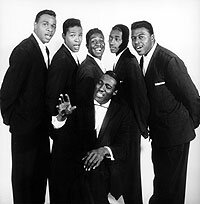
Marvin meets Harvey Fuqua. The Marquees become part of Fuqua's group, the Moonglows. (Photo by Michael Ochs Archives/Getty Images)
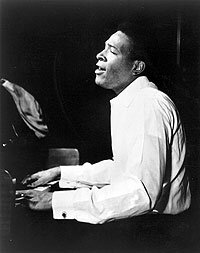
Marvin moves to Chicago in order to train himself in professionalism and technical skills. While on the road with other musicians, he begins to experiment with drugs. The same year, Marvin sings lead on "Mama Loocie" -- his first recording as lead vocalist. (Photo by Michael Ochs Archives/Getty Images)
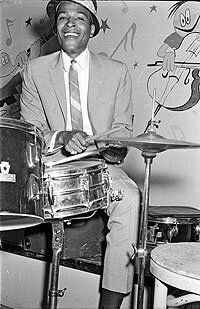
Fuqua, recognizing Marvin's ability, moves with him to Detroit and signs him to Gwen Gordy's label, Anna Label (a subsidiary of Motown). However, Marvin is confined to drumming and piano sessions for Anna Label's other artists, most notably The Marvelettes' hit record "Please Mr. Postman." Around the same time, Marvin begins to court Anna Gordy. In December, he meets Berry Gordy at a Christmas party and signs with Tamla. Marvin legally changes his name to "Gaye," adding the final "e" in part to separate himself from his father's name, end gossip about his sexuality, and be more like his idol Sam Cooke. (Photo by Michael Ochs Archives/Getty Images)

In May, Marvin releases his first single on Tamla, with "Let Your Conscience Be Your Guide" on A-side and "Never Let You Go (Sha-Lu-Bop)" on B-side. The next month, his first album, THE SOULFUL MOODS OF MARVIN GAYE, is released on Tamla. (Image Courtesy Universal Music/Motown Archives)
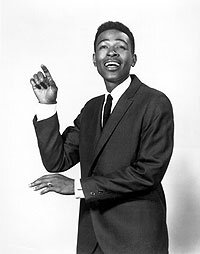
The first Motown Revue leaves for a two-month U.S. tour in October. Performing with his peers, Marvin takes very little advice from Motown's artistic director, with the exception of not performing with his eyes closed. In December, "Stubborn Kind of Fellow," a track that autobiographically references Marvin's personality, is released. It reaches #8 on the R&B charts and #46 on the pop charts. "Hitch Hike" and "Pride and Joy" also do well, confirming Marvin's early commercial status. (Photo by Michael Ochs Archives/Getty Images)
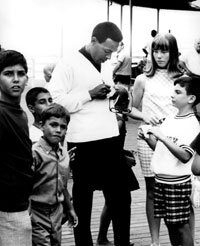
"Pride and Joy" and the STUBBORN KIND OF FELLOW album make Marvin Motown's biggest solo artist. In June, he marries Anna Gordy. Marvin also moves his parents into a better neighborhood of Washington and gives his mother enough money so she won't have to work anymore. "Can I Get a Witness" reaches #22 on the pop charts, and "You're a Wonderful One" reaches #15. (Photo Courtesy Universal Music/Motown Archives)
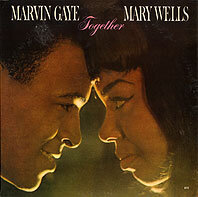
TOGETHER, Marvin's album with Mary Wells, reaches #1 on the R&B charts. The song "Once Upon a Time" becomes Marvin's first international success. This partnering with Wells positions Marvin as the perfect male icon for the Black female record-buying public. Marvin receives top billing in this year's Motown Revue. He appears in The T.A.M.I. Show (a concert film), with the Beach Boys, Chuck Berry, the Rolling Stones, James Brown, and others. In November, he travels to London to appear on the pop TV show Ready, Steady, Go! (Image Courtesy Universal Music/Motown Archives)

In January, "How Sweet It Is (To Be Loved By You)" reaches #6 on the U.S. charts. Marvin and Anna adopt Marvin Pentz Gaye III. In November, "Ain't That Peculiar" reaches #8 on the pop charts. In light of these successes, Marvin begins to feel that he should be given more creative freedom as an artist. He also discovers his fondness for cocaine, and he and Anna have screaming disagreements in public. (Image Courtesy Universal Music/Motown Archives)
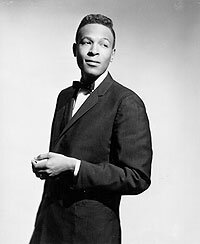
Marvin is paired with Kim West to record TAKE TWO, but West leaves Motown soon after. Marvin appears on The Ed Sullivan Show. (Photo by Michael Ochs Archives/Getty Images)
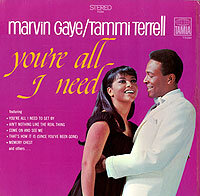
Marvin teams up with Tammi Terrell for "Ain't No Mountain High Enough" and "Your Precious Love." The latter reaches #5 on the pop charts, becoming the pair's first top ten hit in the U.S. On October 14, Tammi Terrell collapses on stage during a concert in Virginia. She is later diagnosed with a brain tumor. Terrell records YOU'RE ALL I NEED from a wheelchair. Marvin relies on cocaine more than ever before, claiming it gives him a clean feeling that could not be found elsewhere. (Image Courtesy Universal Music/Motown Archives)

In a successful year, four of Marvin's hits (two of them with Tammi Terrell) make it into the Top Ten charts in the U.S. -- including "I Heard It Through the Grapevine," Marvin's first #1 pop single. "Grapevine" sells nearly four million copies and remains #1 for seven weeks. (Image Courtesy Universal Music/Motown Archives)

In March, "Grapevine" reaches #1 in Great Britain, making Marvin an international sensation. That year, Marvin tries his hand at producing, working with the Originals on three hit singles. He learns studio techniques that will come to help him later in his career. (Photo by Michael Ochs Archives/Getty Images)

On March 16, Tammi Terrell passes away. Marvin is devastated, and he vows never to do a duet again. He stops performing altogether. Motown, quelling rumors of retirement, releases several "Greatest Hits" compilations and claims that Marvin is in the studio. Photo: Marvin with Tammi Terrell. (Photo Courtesy Universal Music/Motown Archives)
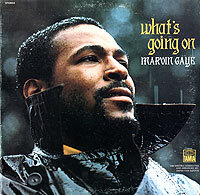
In January, the single "What's Going On" is released and quickly becomes Motown's fastest-selling recording. In March, Marvin begins recording the WHAT'S GOING ON album. On the first day of its May release, the album sells half a million copies, launching it to the #6 position on U.S. charts. TIME Magazine later names it one of the top ten albums of the year. Marvin receives awards from the NAACP and Record World. More and more, he is seen as a serious musician, and he uses his new clout to fight for artistic freedoms for recording artists. (Image Courtesy Universal Music/Motown Archives)

Marvin Gaye Day is announced in Washington D.C., and Marvin is presented with the key to the city. His success streak continues with a Trendsetter Award from BILLBOARD Magazine. Also this year, Marvin composes the score for the film TROUBLE MAN. (Image Courtesy Universal Music/Motown Archives)
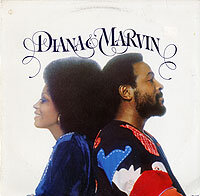
At a benefit concert in Jamaica for Boys Club of Trench Town, the Prime Minister gives Marvin the key to the city of Kingston. In March, Marvin meets Janis Hunter at a Hollywood recording session. He later moves into a secluded house in the hills with her. Around this time, DIANA & MARVIN is recorded. However, some critics feel the album lacks the intimacy achieved in his work with Tammi Terrell. (Diana Ross is said to have recorded her part separately. Marvin allegedly refused to refrain from smoking marijuana in the studio -- even though Ross was pregnant.) (Image Courtesy Universal Music/Motown Archives)
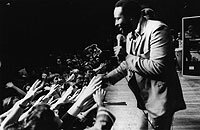
For the first time in four years, Marvin performs in concert in Oakland, CA. Marvin is reportedly so nervous that he sends his brother on stage before him to test the audience's reaction. A recording of the performance is released in August as MARVIN GAYE LIVE! On September 4, his daughter Nona Gaye is born. The mother is Janis, although Marvin is still married to Anna. (Photo by Evening Standard/Getty Images)
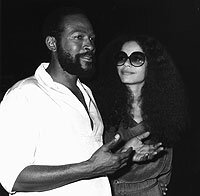
Anna Gaye begins the process of divorcing Marvin. Meanwhile, Marvin has a recording studio built on Sunset Boulevard. Janis becomes pregnant again, and the couple moves to the San Fernando Valley. On November 16, their son Frankie is born. Photo: Marvin with Janis. (Courtesy Universal Music/Motown Archives)
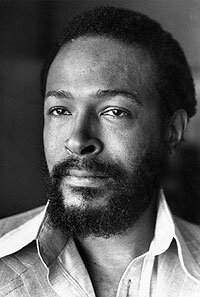
Due to an extravagant lifestyle, failed sporting and business ventures, and an expensive drug habit, Marvin is running out of money. In May, however, he is honored at U.N. headquarters for his charitable work. (Photo by Doug McKenzie/Getty Images)
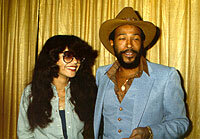
In March, Marvin's marriage to Anna Gordy is finally legally ended. "Got To Give It Up" reaches #1 on U.S. pop, R&B, and dance singles charts simultaneously. In October, Marvin and Janis are married in Baton Rouge. Photo: Marvin poses with a woman, probably his wife, at an event on Halloween. (Photo by Michael Ochs Archives/Getty Images)

The IRS closes down his studio, and Marvin is forced to file for voluntary bankruptcy. However, in September, he signs a new seven-year contract with Motown. His new album, HERE, MY DEAR, chronicles Marvin's troubled marriage to Anna. "I just sang and sang until I'd drained myself of everything I'd lived through," he later said. (Image Courtesy Universal Music/Motown Archives)
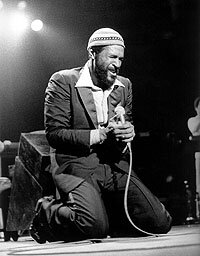
Marvin begins a tour, but it is marred by physical exhaustion and drug abuse. His relationship with Janis is troubled by his paranoia, and Janis moves the children to her mother's house. Marvin moves back in with his mother. His new album, LOVE MAN, is rejected by Motown. Marvin retreats to Hawaii, trying to separate himself from his problems. (Photo by David Corio/Michael Ochs Archives/Getty Images)

By April, Marvin is living in a bread van, broke and drug-addicted. He goes on tour in Europe, but at the final event -- the Royal Gala Charity Show -- Marvin shows up late. This is taken as a public insult to British royalty. (Photo by David Corio/Michael Ochs Archives/Getty Images)
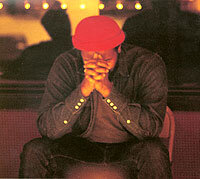
In January, Motown releases IN OUR LIFETIME, which Marvin claims is unfinished work. He disassociates himself from the album, vowing never to work with Motown again. The next month, he and Janis divorce. Marvin continues to struggle with drugs and depression. (Photo by Jim Britt)
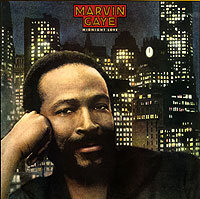
Columbia Records buys out the remainder of Marvin's contract with Motown. The album MIDNIGHT LOVE, which includes "Sexual Healing," is recorded in Belgium. (Image Courtesy Universal Music/Motown Archives)
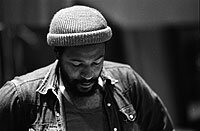
Marvin sings the National Anthem at the NBA All-Star Game in Los Angeles in February. At the Grammy Awards, he wins "Best Male Vocalist" and "Best Instrumental Performance in R&B" for "Sexual Healing." By now, Marvin has 26 albums and 40 hits under his belt. He sets off for a four-month tour in April, but his drug use increases to such an extent that he becomes paranoid that someone is plotting to kill him and requires several employees to carry guns. After the tour, he moves back into his mother's house. He rarely bothers to dress himself, and he threatens to commit suicide. (Photo by Jim Britt)
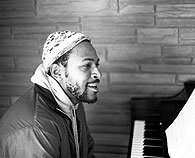
On April 1, Marvin is shot and killed by his father after a dispute. About 10,000 people attend a public viewing of his coffin at Forrest Lawn Memorial Park in Los Angeles three days later. After a separate, private funeral, his ashes are scattered at sea. (Photo by Jim Hendin)

